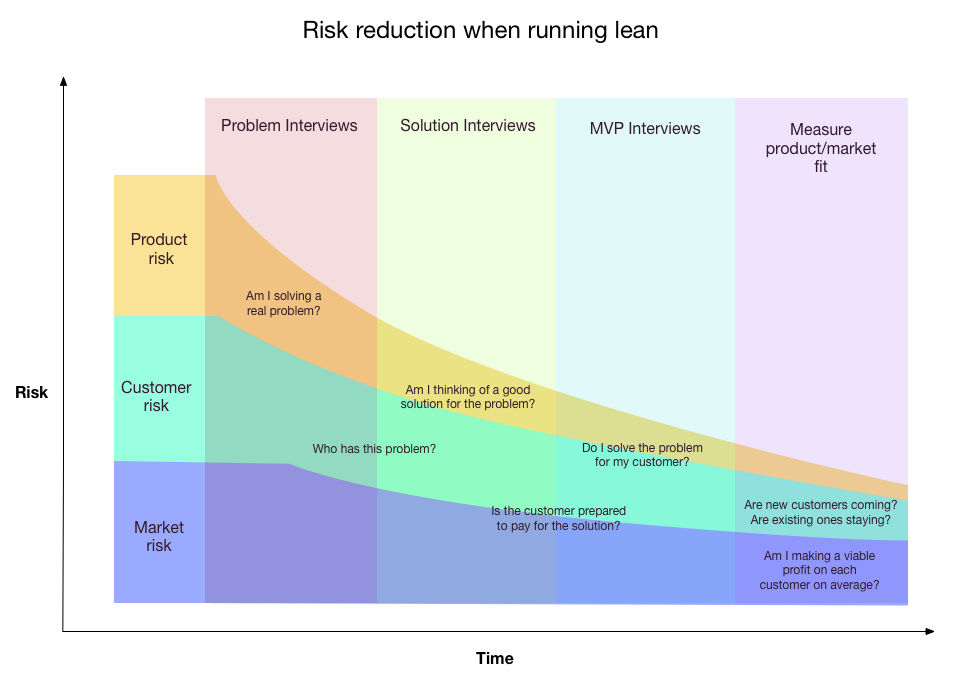Reducing risk fast when running lean
Paolo Bongiovanni10 Apr 17

The short of it
Creating a business is a risky business.
Having a proven strategy on how to build the business is a good idea, it gives you a map, you know where you are in your company building journey and you know what to focus your energies on next.
The lean startup approach is one such strategy that tries to minimise waste by reducing risk fast and cheap, by making sure that:
- you have a real problem you can build a solution for
- you can reach a large enough number of people who care enough about the problem to pay you for a solution
- you have a way to sell profitably in a scalable way
The long of it
The central principle of lean is:
Reduce risk fast with the smallest amount of money you can
- Tackle product risk as fast as possible, it's where many businesses fail even if it's the cheapest thing to test
- Tackle customer risk as a second priority, know who your public is and how you can reach it
- Once you have covered the basics and there are strong indications you have a product that is needed by a public you can reach, reduce market risk by validating that you can build a scalable business
How does the lean startup strategy work?
- Formulate the problem you are solving and run problem interviews. Move forward only if you have positive answers to the questions:
- Am I solving a real problem?
- Who has this problem?
- Design a solution, don't implement it. Do just enough so you can narrate the solution and run solution interviews. Move forward only if you have positive answers to the questions:
- Am I thinking of a good solution for the problem?
- Who has this problem?
- Is the customer prepared to pay for the solution?
- Create a minimum viable product (MVP), the minimum set of features that deliver your unique value and run MVP interviews. Move forward only if you have positive answers to the questions:
- Do I solve the problem for my customer?
- *Is the customer prepared to pay for the solution?
- Find a financially viable way to acquire and retain customers by measuring the product/market fit
- Are new customers coming?
- Are existing customers staying?
- Am I making a viable profit on each customer on average?
We're starting our solution interviews as we speak!
Related articles
Take advantage of our free 30-day trial to experience the benefits of Mindiply
© 2016 - 2026 Mindiply Ltd. All rights reserved
COMPANY
PRODUCTS AND SERVICES
LEGAL







